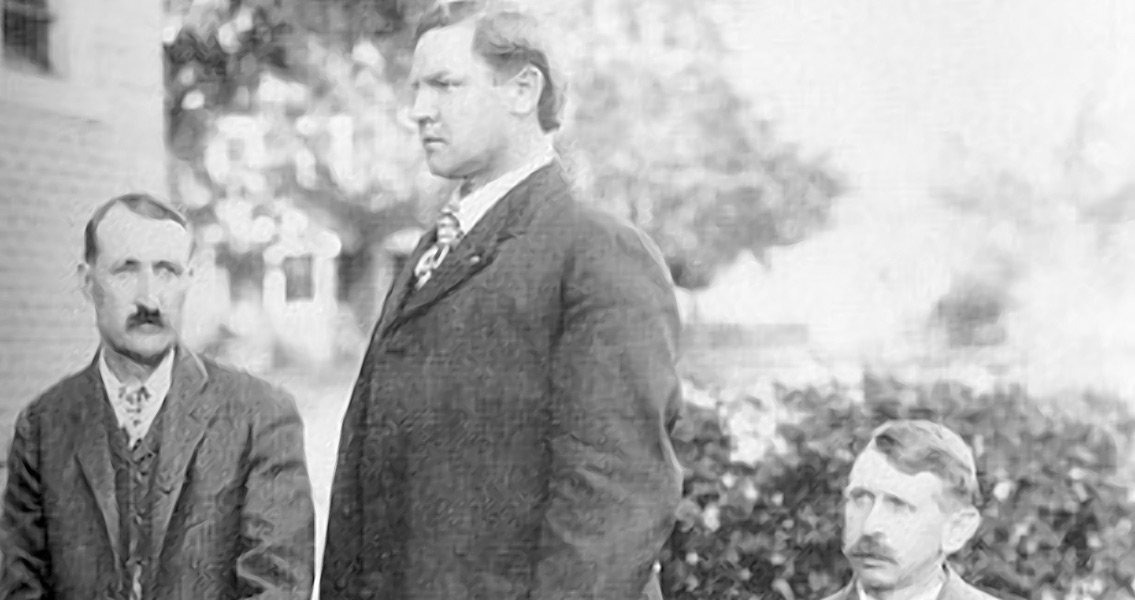<![CDATA[On 30th December 1905 a bomb exploded at the house of Frank Steunenberg, fatally injuring the former state governor of Idaho. The story of the murder and its aftermath reads like the plot of a HBO drama, involving conspiracy, hired killers and court room drama. It also exposes the volatile reality of the United States' Old West at the turn of the century. The bomb itself was detonated through a booby trap. Steunenberg had gone out for a walk on the evening of the 30th when the wooden slide that opened the gate to his house was rigged with dynamite. When Steunenberg returned home and opened the slide, the bomb was triggered. James McParland from the Pinkerton Detective Agency was assigned to investigate the murder. The Pinkerton Detective Agency was a private organisation that was frequently called in by both government and industry to deal with crime and disorder in the Old West, particularly that associated with trade unionism and labour unrest. McParland arrested Harry Orchard, a stranger who had been staying at a local hotel. In Orchard's hotel room Pinkerton detectives found dynamite and the wire used to detonate it. McParland assisted Orchard in writing a confession. In exchange for a reduced sentence, Orchard claimed he had been a contract killer working on behalf of the Western Federation of Miners (WFM), a powerful trade union. In the statement, Orchard named William Hayward (WFM secretary), Charles Moyer (WFM president) and George Pettibone (a WFM member) as co-conspirators in the assassination. The three WFM members were kidnapped by Pinkerton agents in Colorado and bought back to Idaho by train. Steunenberg had entered politics in 1890, when he was elected to the House of Representatives. In 1896 he was elected state governor, at the head of a coalition of Republicans, Democrats and Populists. A large part of his political success came from his reputation as a supporter of labour and the 'little guy'. This reputation would be severely tested towards the end of the century, when Idaho became the site of one of the United States' most vicious labour conflicts. Silver miners in Idaho had been campaigning for unionisation and improved pay and conditions since 1892. Repeated frustration of their attempts saw them become increasingly radicalised and turn towards the WFM, a violent organisation that advocated aggressive tactics and worker control of industry. In 1899 mine owners in the silver rich Coeur d'Alene attempted to break the union. In retaliation the WFM blew up one of the mining companies' concentrators - a huge and expensive piece of equipment. Concerned by the WFM's actions, Steunenberg turned against the unions and gave into the demands of the mining companies. He requested for the federal government to send troops into Idaho, who placed the Coeur d'Alene region under martial law and imprisoned hundreds of miners. Steunenberg had restored order in the lucrative mines, but earned the enmity of the WFM's radical wing. It was this that led McParland to believe that they were behind Steunenberg's murder. The trial of the WFM members resulted in acquittal for all three. In their defence was Clarence Darrow, popularly called the "attorney of the dammed", who had already built a reputation as an effective advocate for trade unionists in his defence of Eugene Debs in 1894. The basis of the defence was that the prosecution's case was based entirely on the testimony of Orchard. Orchard had a history of violence and murder, having already killed several people before, including two men when he blew up a mine in Colorado. A New York Times article on the 1907 trial, written by Oscar King Davis, described Orchard's testimony thus; "For three hours and a half today Harry Orchard sat in the witness chair at the Haywood trial and recited a history of crimes and bloodshed, the like of which no person in the crowded courtroom had ever imagined." The trial concluded that Orchard had killed Steunenberg because of his own vendetta. Nevertheless, Orchard avoided the death penalty due to the deal he had struck with the Pinkerton detective, and was instead sentenced to life in prison. To this day it is still debated whether the WFM members had any involvement in the assassination, an involvement that could have been hidden by the brilliance of their defence lawyer. Whichever way one views the verdict of the trial, the events themselves reveal a great deal about the Old West in the post Civil War era. The brutal labour disputes, assassinations and private detective agencies paint a picture of a volatile but fascinating period of American history.]]>
Bombs, Detectives and Miners: The Murder of Frank Steunenberg
